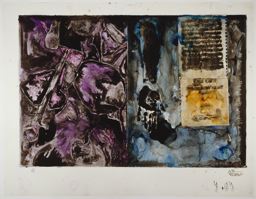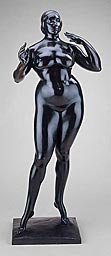
Cast of Cosby Show featuring Claire Huxtable

Cast of Living Single

Cast of A Different World

Cast of Soul Food

Cast of Girlfriends
Hi All,
My father sent me a link to Echoes Of TV’s First Lady – Michelle Obama’s Last True Cultural Antecedent Is ‘Cosby’s’ Clair Huxtable by Robin Givhan (http://www.washingtonpost.com/wp-dyn/content/article/2009/06/18/AR2009061803999.html?referrer=emailarticle). What a juicy article! I copied and pasted in the article below. As I read it, I started thinking about “Who Will Tell My Sista Stories?,” a poetical reflection that I recently wrote and included in my upcoming book, That Which Awakens Me: A Creative Woman’s Poetic Memoir of Self-Discovery(Summer 2009). It discusses the presence and absence of Black women’s stories in television, radio, and film. A copy of the poetical reflection is included below. I invite you to read the Washington Post article and my poetical reflection. Let me know what you think.
Peace and Creativity,
Ananda
Who Will Tell My Sista Stories? by Ananda Leeke
Copyright 2009 by Madelyn C. Leeke
Growing up in the 1970s, Thelma and Penny on “Good Times” were the only young African American women I remember seeing on television.
Although I admired their spunky personalities, I found it difficult to relate to their lives in a Chicago public housing project.
In my sophomore year of college, something amazing happened.
“The Cosby Show” came on the scene.
It introduced me to myself.
That was the first time I saw images of my childhood and family on the television screen.
I was able to connect with the character Denise especially when she decided to attend Hillman College, a historically Black college.
Three years later, “A Different World” was created.
That’s when Mr. Cosby passed the torch to Debbie Allen, Susan Fales-Hills, and a team of talented writers and cast members.
They gave me multiple images of myself: Jaleesa, Whitley, Freddie, Kim, and Lena.
For six years, I sopped up their juicy stories.
When both shows faded from the scene, I found comfort in Yvette Lee Bowser’s “Living Single.”
The show helped Bowser make history as the first African American woman in TV history to create her own series.
The twentysomething adventures of “Living Single” characters, Khadijah, Max, Synclaire, and Regine mirrored my own life and the lives of my girlfriends.
We were able to hang out for five years straight.
I endured a two year “colored girl TV” break until Mara Brock Akil launched “Girlfriends” and Tracey Edmonds and Felicia D. Henderson gave birth to “Soul Food.”
“Girlfriends” and “Soul Food” celebrated my life, loves, losses, and female friendships as a thirtysomething.
Lynn and Joan were my favorite characters on “Girlfriends.”
Maxine and Teri were my favorites on “Soul Food.”
Bowser came back with “Half and Half.”
Watching the characters, Mona and Dee Dee interact as sisters helped me see different sides of my personality.
Jada Pinkett-Smith delivered “All of Us,” a television show she co-created with her husband, Will.
TV Land appeared to be just fine.
And then it happened.
“Soul Food,” the longest-running Black hour-long drama ever on television, said goodbye.
More bad news followed when “Half and Half,” “Girlfriends,” and “All of Us” were abruptly cancelled.
Shonda Grimes offered a glimmer of hope with her characters, Dr. Miranda Bailey on “Grey’s Anatomy” and Dr. Naomi Bennett on “Private Practice.”
Akil did the same with “The Game.”
Unfortunately, their efforts could not satisfy my hunger for stories about my life as a Black woman from the post-Civil Rights generation.
So I turned to print media: O, The Oprah Magazine, Essence, Heart & Soul, UPTOWN, Upscale, Honey, Today’s Black Woman, and Suede.
When my cravings for stories got the best of me, I rented some of my favorite movies: Love Jones, Best Man, Love & Basketball, Brown Sugar, and Something New.
They led me to a delicious series of poetry, fiction, and nonfiction books.
Inner-Course: A Plea for Real Love by Toni Blackman
Selah’s Bed by Jenonyne Adams
A Love Noire and Hunger by Erica Simone Turnipseed
All the Joy You Can Stand: 101 Sacred Power Principles for Making Joy Real in Your Life by Debrena Jackson Gandy
Having What Matters: The Black Woman’s Guide to Creating the Life You Really Want by Monique A. Greenwood
Having It All?: Black Women and Success by Veronica Chambers
Sacred Woman by Queen Afua
being black by Angel Kyodo Williams
Longing To Tell: Black Women Talk About Sexuality and Intimacy by Tricia Rose
The BAP Handbook: The Official Guide to the Black American Princess by Kalyn Johnson, Tracey Lewis, Karla Lightfoot, and Ginger Wilson
Kinky Gazpacho: Life, Love & Spain by Lori L. Tharps
Naked: Black Women Bare All About Their Skin, Hair, Hips, Lips, and Other Parts edited by Ayana Byrd and Akiba Solomon
The more I read, the more I realized I needed to identify alternative sources for my sista stories.
So I tuned into NPR’s News & Notes with Farai Chideya and Tell Me More with Michel Martin.
Both radio shows exposed me to blogs and Internet radio programs created and controlled by Black women.
I fell head over heels in love with Gina McCauley’s What About Our Daughters and Michelle Obama Watch blogs.
McCauley’s blogs and Black Women’s Roundtable Internet radio show introduced me to a new world of Black women’s voices.
They inspired me to take responsibility for staying informed.
So I did some research and discovered a plethora of Black women’s blogs, e-zines, radio shows, podcasts, videos, and social networking sites that address issues I am interested in.
From my research, I selected several e-zines and blogs to read on a regular basis, joined many social networking sites, watched numerous videos, and became a regular listening audience member for a few radio shows and podcasts.
I even wrote and published my first novel and launched several radio shows, social networking sites, and blogs to document sista stories.
It’s a good thing I did all of this before News & Notes was cancelled.
The one thing I have learned is a sista is the only one who can tell her story.
Now that social media is leveling the playing field, we have more tools and access to distribute our sista stories.
The only thing left for us to do is to just do it!
Echoes Of TV’s First Lady – Michelle Obama’s Last True Cultural Antecedent Is ‘Cosby’s’ Clair Huxtable by Robin Givhan
Friday, June 19, 2009
So far, the first lady has chosen to be a food bank volunteer with an outsize entourage and an education activist with the largest soapbox imaginable. But Michelle Obama also fills a role that is not of her choosing but that may, in fact, be the most influential: She serves as a symbol of middle-class progress, feminist achievement, affirmative-action success and individual style.
And she has done all this on the world stage . . . while being black.
Time and again, observers grasp for adjectives to describe Obama’s combination of professional accomplishment and soccer-mom maternalism. It’s no wonder so many eye her with awe and disbelief. Or why a minority still view her with suspicion. There have been few broad cultural precedents for what she represents.
Historically, television has been more progressive than reality, preparing a society for the moment when what only existed in the shadows surges into the spotlight. From “Soap” to “Will & Grace,” TV helped people envision gay couples living picket-fence lives. “Maude” and daytime soap operas raised the topic of abortion before it became a political wedge issue. Television made the case for the first female commander in chief. And popular culture has more than once suggested that the idea of an African American president wasn’t so far-fetched. But it rarely introduced viewers to anyone like Michelle Obama.
The last similarly accomplished and wholesome black woman to enter the homes of TV audiences — both black and white, in small towns and big cities — was Clair Huxtable, the matriarch of “The Cosby Show.” It is a cultural comparison more apt than the one made to Jackie Kennedy, which is rooted in little more than the two first ladies being mothers of young children and their affection for sleeveless dresses.
Television, in particular, speaks to viewers intimately, in the privacy of their homes, building long-term relationships and weaving complicated narratives. People discuss the lives of TV characters — from soap opera stars to reality-show contestants — with the kind of emotional empathy normally saved for family members. Syndication allows characters to live forever and connect to multiple generations, whether it is the blended family of “The Brady Bunch” or the codependent New Yorkers on “Seinfeld.”
Even as viewing habits have become more fragmented through cable and DVRs, TV still serves as a lingua franca. It can gently and affably prod disparate groups toward greater tolerance and acceptance. TV builds kinship.
But most of the prominent portrayals of black women on television are men in corpulent drag (Madea), strutting tarts (“The Real Housewives of Atlanta“) or emotionless law enforcement officers (Lt. Anita Van Buren of “Law & Order”). In its most enlightened moments, popular culture presents black women as strident taskmaster with the heart of gold — see Dr. Miranda Bailey of “Grey’s Anatomy.”
In a recent essay for the Nation, Columbia law professor Patricia Williams shared her frustrations about popular culture’s failure to present more images of the sort that Obama reflects. Black women — and women of color, in general — still are dogged by the tropes that have haunted them for generations, she wrote. But instead of images such as Mammy and Prissy from “Gone With the Wind,” contemporary women must deal with “the adventures of Flavor Flav and Strom Thurmond” as well as “depictions from Don Imus and the minstrelsy of Tyler Perry.”
“Where, for heaven’s sake, is a picture of black femininity (in particular, that of darker-skinned, non-tragic femininity) that might signify beauty, chic, elegance, vulnerability, sophistication?”
Where are the images that celebrate the educated black woman? “The jurisprudence of the entire 20th century was about black people trying to get into school,” Williams said in a telephone interview. “That’s invisible.” Niche media have tried to showcase the black professional class — from the stories of uplift in Ebony magazine to “Harlem Heights,” a reality show about 20-something buppies that debuted this spring on BET, a rarity on a black-oriented cable network often criticized by viewers for pandering to the worst stereotypes of African Americans. There have been shows that have spoken knowingly to a predominantly black audience, such as “Living Single” and “Girlfriends.” “Soul Food” and “Lincoln Heights” address the small segmented audiences of cable.
Only Audra McDonald’s character on ABC’s “Private Practice” — a divorced, stylish doctor with a young daughter, a vibrant social life and a healthy relationship with her ex-husband — really reflects a generation of black women with advanced degrees, solid self-esteem and no anger issues.
But TV audiences have to go back to “The Cosby Show” to find a close facsimile to what Obama represents both professionally and personally, and that’s going back more than 17 years. Clair Huxtable — the stylish mother, wife and lawyer — remains a lonely figure in popular culture.
As Seen on TV
“The Cosby Show,” a sitcom about a black American family with five children, a lawyer-mom played by Phylicia Rashad and comedian Bill Cosby as the doctor-dad, ran from 1984 to 1992. Inspired by Cosby’s monologues on child-rearing, the show was an anomaly when it premiered in the wake of TV series such as “Sanford and Son,” “Good Times” and “The Jeffersons,” which told the stories of down-and-out black Americans and upwardly mobile ones with equal parts slapstick and buffoonery.
“The Cosby Show” was doggedly upper-middle class in its sensibility. Every detail, from the choice of artwork in the Huxtable living room to the use of jazz in its opening credits to references to historically black colleges, spoke of the “Talented Tenth,” a functional, culturally proud segment of the African American community that did not make the evening news.
In its first season, “The Cosby Show” finished third in the ratings. For the next four seasons, it was the top-rated series on television. Over the course of its run, it revived the situation-comedy format, resuscitated a flailing NBC, sparked conversations about race and made Cosby into America’s dad.
Author Susan Fales-Hill, 46, began her career on the show as an apprentice and then a writer. Later, she became executive producer and head writer for the spinoff series “A Different World,” about life on a fictional, historically black college campus through which viewers could see work-study students and trust-fund babies.
“There’s something that happens when you validate the existence of someone by visually representing them,” she says. “What people see, they believe.”
And what they do not see on a regular basis, they assume to be rare or even nonexistent.
Fales-Hill could write from her own experience. She is the biracial daughter of actress Josephine Premice, a contemporary of Diahann Carroll and Lena Horne. She is a published author and comes from a background of private schools.
During her time on “Cosby,” Fales-Hill remembers people telling her that families like the one on the show didn’t exist, but her rejoinder was her personal story. “I had people tell me this is like a white family,” Fales-Hill recalls. “But ‘Cosby’ brought the dirty secret of America — the black bourgeoisie — out of the closet.”
When “Cosby” went off the air, the lesson Hollywood took was not that stories about functional black professionals can have broad appeal. It was that Bill Cosby has broad appeal, that stand-up comics could sustain entire sitcoms and that situation comedies can draw large audiences. “The Cosby Show” opened the door for “Grace Under Fire,” “Home Improvement,” “The Fresh Prince of Bel-Air,” “Cybill” and “Roseanne.” And Cosby went on to star in another self-named comedy, which ran from 1996 to 2000. (And once again, Rashad played his wife, although the role was a modest one.)
By the end of the millennium, white, angst-ridden yuppies and white, wacky singles were dominating the airwaves. “Survivor” debuted in 2000 to launch the reality-show juggernaut. And women like Fales-Hill largely vanished from popular culture.
“There’s a generation with very little exposure to the black professional class, and they stand in amazement,” Fales-Hill says. “People say, ‘You’re so articulate.’ And it’s because I can string a sentence together!”
In a culture in which every white woman is presumed to be Everywoman until proven out of the mainstream, Obama has brought the normalcy of black women into the broader social consciousness. All it took were her two Ivy League degrees, a six-figure boardroom salary, a Norman Rockwell family, soccer-mom bona fides and an ability to dress herself without the aid of an entourage.
In many ways, the first lady has made people see — really see — black women for the first time. For example, when a black model appeared on the May cover of Vogue, news articles credited the “Obama effect,” ignoring the concerted lobbying by fashion industry activists that began long before Barack Obama was even a presidential contender.
The role of style in defining the first lady might easily be dismissed as a distraction from more substantive issues. But Williams says the fan magazine breathlessness is significant because “it implies a kind of parity we really needed.”
Enthusiasm over glossy-magazine beauty as defined by a darker-skinned black woman has to be seen against the backdrop of history, when black women’s appearance was used as a tool of oppression. High culture rhapsodized in love sonnets about ivory complexions, flaxen hair and ruby lips. And today, black women still mostly surface as sidebars in beauty stories.
“Somewhere in the core of it is the question of whether black really is beautiful,” Williams says. “That’s why I think it’s not about superficiality. It’s a precarious moment. Only a minute ago, she was Angela Davis.”
Fighting Stereotypes
In the NAACP’s most recent report on diversity on television, the civil rights organization noted in December that “it is hard to draw any positive conclusions.” And in particular, it pointed to “The Hills” and “Gossip Girls,” which are aimed at a youth market. Viewers in their teens and 20s live in a more diverse society than their parents did. But little had changed since what the NAACP called the “whiteout” years of shows such as “Friends” and “Seinfeld” — and more recently “Sex and the City” and “Lipstick Jungle” — which were situated in the melting pot of New York City but seemed to exist in a parallel, nearly all-white universe.
Hollywood producer Mara Brock Akil was a regular “Sex and the City” viewer. “They were able to show women as layered and flawed — and spending obscene amounts of money on accessories — and still empowered and smart women,” Akil says. “I related to it, but I longed to see myself physically validated, which they rarely did.”
Akil, 39, grew up middle class in the Baldwin Hills neighborhood of Los Angeles and in Kansas City, Mo. But unlike television viewers who find themselves disappointed by network offerings and can only blog about it, Akil had the ability to alter the landscape.
So she created “Girlfriends.” It debuted in 2000 on UPN, a new network that was aggressively courting a black audience. Among black women, it was appointment television. The ongoing saga of Joan (Tracee Ellis Ross) and her trio of friends gave professional, stylish black women a voice on television.
“I almost felt like a documentarian,” Akil says. “I wanted people to know what’s on our mind.”
The show talked about romance and work, and it poked fun at the assumptions about black culture vs. white. Joan, for example, was a huge fan of Celine Dion — because Akil is — as well as more soulful singers such as India.Arie.
“I also wanted to combat a stereotype on TV that black women are either the sister-girl or the asexual judge with no life. I can be fearless at work, but I can also be stupid over a guy. I can be all those things at once. I wanted to show how fashionable we are. The fashion and the femininity, I really wanted to talk about that,” Akil says. “My agenda was to speak to the widest audience possible, but I knew the core would be the African American audience.”
“Girlfriends” ran for eight seasons — eventually moving to CW. In that time, it was a favorite at the BET Honors and the NAACP Image Awards, winning at least five times. It was nominated for only one prime-time Emmy — in 2003, for cinematography. It lost to “Will & Grace.”
The show didn’t have the broad cultural impact of “The Cosby Show,” which, during its eight-year run, won virtually every award possible except a Nobel prize. No other show about the professional black class has made the inroads that “Cosby” did. None of pop culture’s most enduring archetypes of funny, smart, professional, pretty women — from Mary Richards to Murphy Brown to Carrie Bradshaw — have been black.
And Clair Huxtable, despite Rashad’s successes on Broadway, is now most often seen by middle America as the latest Jenny Craig spokeswoman touting her weight loss.


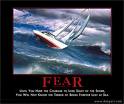

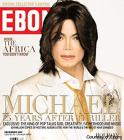
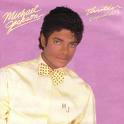

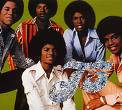

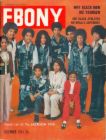

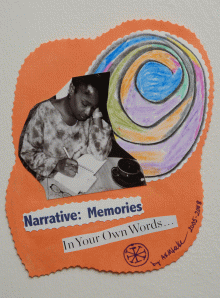








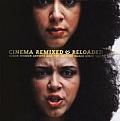 Cinema Remixed & Reloaded: Black Women Artists and the Moving Image Since 1970 by Andrea Brownlee
Cinema Remixed & Reloaded: Black Women Artists and the Moving Image Since 1970 by Andrea Brownlee Cy Twombly – Untitled, 2007
Cy Twombly – Untitled, 2007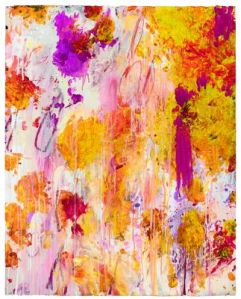 Cy Twombly – Untitled, 2001
Cy Twombly – Untitled, 2001